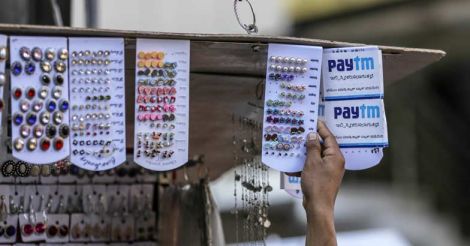Malappuram: In December last year, Nedumkayam gained national fame as it was declared the first ‘digital’ tribal colony of the country. Almost a year later, hardly anyone in this hamlet of Nilambur in Malappuram district does digital transactions.
In this village of 105 families, authorities had promised Wi-Fi facilities as well as provisions for the villagers to sell forest produce and buy essentials through cash-less transactions.
A year from the day when high-denomination currency found its way out of Indian life, the promises have been woefully ill-kept.
It is the same story in Surakhpur, Delhi’s 'complete digital-payment-enabled village', and Akodara in Gujarat, the first cash-less village of the country.
In all these places the push to make the villages transact digitally and move away from cash has simply lost momentum.
For those who are visiting Surakhpur, it is advisable to carry some loose change. The village is within the boundaries of the teeming metropolis of Delhi, but Internet connectivity dims with falling signal strength the moment one enters the village.
If you thought of navigating using Google Maps, then good luck.
The Delhi government declared Surakhpur a digital village in February this year.
It invited 20 banks to Surakhpur, ensured bank accounts to all the 113 families in the village and connected those to Aadhaar.
People were trained in using apps such as BHIM and mobile banking, and shops were given POS machines.
But as soon as the celebrations ended, people started returning to the conventional ways, lack of Internet coverage being the key challenge.
Most women in the village don’t have bank accounts, though their empowerment was one of the declared objectives under the digitization program.
In Akodara, 90 kilometers from Ahmedabad, just 20% of the people use digital means to transact, shows estimates.
It was declared a digital village in January, well before the push for cash-less transactions started with demonetization.
Free Wi-Fi and bank accounts were given to everyone under the project initiated by a bank. Through this a grocer would accept payments as small as Rs 10 through e-banking. The buyer could transfer the money by sending an SMS to the bank.
It worked until the service started attracting a fee.
As the free Wi-Fi was withdrawn and SMSs were charged Rs 1 each, most people returned to cash.
Ibrahimpur in Telangana was South India’s first digital and the country’s second cash-less village. But the fame lasted only for a few months.
This village, 125 kilometers from Hyderabad, was declared fully cash-less in January. Under an initiative by Andhra Bank, traders and even autorickshaw drivers were provided POS machines and trained on digital transactions.
Most of them have now returned the machines. The reason: The bank has started levying a usage charge of Rs 1,400 per month.
Read more at the special Demonetization indepth in Onmanorama

























 Paytm
Paytm